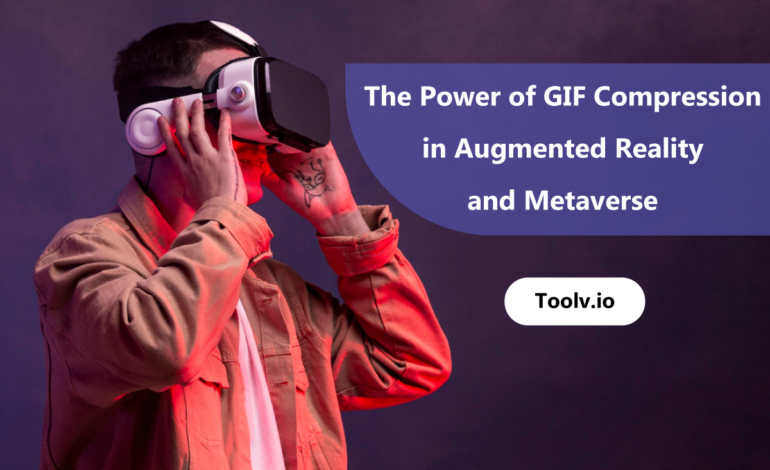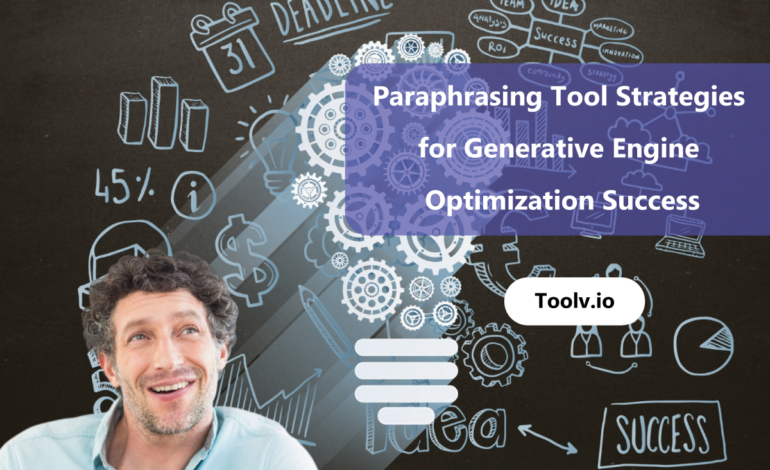The Power of GIF Compression in Augmented Reality and Metaverse

As the digital world expands into more immersive experiences like Augmented Reality (AR) and the Metaverse, the way we create, share, and optimize visual content is undergoing a profound transformation. Animated images have become essential in bringing these virtual spaces to life, providing users with engaging, interactive, and vibrant environments. However, the challenge remains: how do we maintain smooth performance and fast loading times while using rich visuals such as GIFs? This is where GIF compression for AR comes into play, offering vital solutions for enhancing user experience in increasingly complex digital spaces.
In AR applications, high-quality visuals are critical but often come at the cost of large file sizes that can slow down rendering and increase data consumption. Similarly, the Metaverse, with its promise of interconnected virtual worlds, demands efficient handling of graphical assets to avoid lag and latency issues. Therefore, to fully embrace the potential of animated images in these next-gen environments, developers and content creators must find ways to optimize GIFs for Metaverse experiences. Doing so ensures that these visual elements load quickly without compromising their vibrancy or fluidity.
The importance of compression techniques cannot be overstated, as they enable smoother experiences by reducing file sizes without significant quality loss. By applying effective methods to compress GIFs for immersive experiences, creators can contribute to faster, more responsive virtual spaces that users enjoy without frustration or delays.
Understanding the Role of Animated Images in Virtual Reality
Virtual reality is one of the most visually demanding platforms, requiring a seamless blend of 3D models, textures, and animations to immerse users fully. Animated images in virtual reality are key to creating dynamic, engaging environments that respond to user interaction. However, these animations must be optimized to avoid performance bottlenecks. Large uncompressed GIFs can quickly overwhelm bandwidth and processing power, leading to a poor user experience.
To tackle this, developers employ various AR image optimization techniques that focus on balancing visual quality with file size. Reducing the weight of GIFs not only accelerates rendering but also minimizes network load, which is crucial for users accessing VR content through wireless connections or limited data plans. As virtual reality continues to grow in popularity, mastering these optimization strategies will be vital for anyone producing content in this space.
Why Fast-Loading GIFs in AR Apps Matter
Speed is everything when it comes to AR applications. Whether you’re interacting with an overlay in real-time or exploring a virtual gallery, slow-loading images can break immersion and frustrate users. Fast-loading GIFs in AR apps ensure that animations appear instantly and smoothly, which is fundamental to maintaining engagement.
Compression techniques help achieve this speed by shrinking GIF file sizes, making them easier to stream or download. This efficiency benefits both app developers, who can reduce server load, and end-users, who enjoy a smoother experience. Without compression, even the most creative AR visuals risk becoming cumbersome and slow, damaging the overall impression of the app.
Best GIF Compressor for VR Content: Choosing the Right Tool
With the surge in VR content creation, identifying the best GIF compressor for VR content is a priority. Not all compression tools are created equal; some may sacrifice too much image quality, while others fail to reduce the file size sufficiently. The ideal tool strikes a balance, maintaining sharpness and animation smoothness while minimizing the file weight.
Using an effective GIF compressor can drastically improve how animated visuals perform in VR environments. It ensures that immersive worlds load quicker and stay responsive, which is essential for user satisfaction. Tools like this GIF compressor provide an intuitive interface and powerful algorithms designed to meet the demands of AR and VR developers.
Reduce GIF Size for 3D Environments Without Sacrificing Quality
3D environments, particularly in AR and the Metaverse, are inherently resource-intensive. Large textures and animations can cause lag, disrupt rendering, and increase loading times. To prevent these issues, it’s crucial to reduce GIF size for 3D environments without sacrificing the smoothness or clarity that users expect.
Effective compression focuses on eliminating unnecessary frames, optimizing color palettes, and removing redundant data. This process results in lightweight GIFs for virtual worlds that retain their visual impact while being easy to handle across various devices and network speeds. Content creators who master this balancing act will find their visuals reaching wider audiences with fewer technical hiccups.
Metaverse Content Compression: Why It’s a Game-Changer
The Metaverse is poised to become the next frontier of social interaction, entertainment, and commerce. However, the scale and complexity of this interconnected virtual space present unique challenges. To make these digital worlds accessible and enjoyable, Metaverse content compression is essential.
GIFs are commonly used to add life and motion to digital environments, but their file sizes can quickly balloon without compression. Efficient compression techniques help reduce bandwidth consumption and speed up the loading process, making it easier for users to move seamlessly between virtual spaces. By prioritizing content compression, developers can enhance performance and ensure a more immersive and frictionless Metaverse experience.
Lightweight GIFs for Virtual Worlds: Enhancing Accessibility and Experience
Creating lightweight GIFs for virtual worlds isn’t just about technical optimization—it’s about enhancing accessibility. Smaller files mean quicker downloads, lower data usage, and less strain on devices, enabling a broader audience to participate in these digital spaces.
This approach benefits not only high-end users but also those with slower internet connections or older hardware. Lightweight GIFs contribute to a more inclusive Metaverse, where everyone can enjoy rich, animated content without barriers. Focusing on optimization empowers creators to expand their reach and build vibrant communities across diverse platforms.
Practical AR Image Optimization Techniques for Developers and Creators
For those building AR experiences, mastering AR image optimization techniques is essential. This involves understanding how different compression methods affect file size and quality, selecting appropriate color depth, and using tools that can intelligently reduce redundant animation frames.
Effective optimization begins with choosing the right formats and tools tailored to the target platform. Combining these techniques with smart compression strategies ensures fast-loading visuals and a smooth user interface. With the growing popularity of AR in gaming, retail, and education, these skills are becoming invaluable for developers and content creators alike.
If you want to explore advanced methods and tools to optimize your animated images in virtual reality and beyond, check out this image compressor. It offers practical solutions that fit perfectly within AR and Metaverse content workflows.
The Future of GIF Compression in Immersive Experiences
As AR and Metaverse technologies advance, the demand for rich, interactive visual content will only increase. GIF compression will continue to play a pivotal role in ensuring that these experiences remain accessible, fast, and enjoyable. Innovations in compression algorithms, potentially powered by AI, are expected to deliver even more efficient ways to shrink file sizes while preserving quality.
By staying ahead of these trends and leveraging the best compression tools, creators can unlock new possibilities for immersive storytelling, marketing, and entertainment in virtual environments.
Integrating GIF Compression Into Your Workflow
Adopting GIF compression isn’t just a one-time task; it should be integrated into the entire content creation and delivery process. From initial design to final upload, considering file size and loading speed will improve the overall user experience.
Embedding compression early on prevents bottlenecks and ensures that AR apps and Metaverse environments perform well, even under heavy load. This foresight helps maintain engagement and drives user retention.
Overcoming Common Challenges with GIF Compression in AR and the Metaverse
Despite its benefits, GIF compression can be tricky. Finding the right balance between file size and image quality often requires experimentation and familiarity with different compression tools. Additionally, the complexity of AR and Metaverse platforms means that some optimizations must be tailored to specific devices or software.
Creators must also consider how compression affects animation fluidity and color fidelity. Poorly compressed GIFs can appear pixelated or jittery, which undermines the immersive experience. Therefore, understanding best practices and continuously refining compression strategies is crucial to success.
Enhancing User Experience Through Optimized GIFs
Ultimately, the goal of compressing GIFs in AR and the Metaverse is to enhance the user experience. Faster load times, smoother animations, and reduced lag all contribute to a more engaging and enjoyable environment. This encourages users to spend more time interacting with content, exploring virtual worlds, and participating in online communities.
Optimized GIFs also benefit platform providers by reducing server strain and improving overall stability. This balance of technical efficiency and creative expression is key to the future growth of immersive digital spaces.
Why GIF Compression Will Remain Relevant in the Era of AR and Metaverse
While technology evolves rapidly, the fundamental need for efficient file handling will not disappear. As AR and Metaverse environments become more sophisticated, the volume of visual data will grow exponentially. Without effective compression, these platforms risk becoming inaccessible to many users.
GIF compression offers a scalable solution, enabling content creators to deliver rich animations without overwhelming bandwidth or processing capabilities. It’s a foundational technology that will continue to support innovation and accessibility in virtual worlds.
FAQs
What is GIF compression for AR?
GIF compression for AR involves reducing the file size of animated GIFs used in augmented reality apps to improve loading times and performance.
How do you optimize GIFs for the Metaverse?
Optimizing GIFs for the Metaverse means compressing and adjusting file sizes so that animations load quickly without losing quality in virtual environments.
Why are fast-loading GIFs important in AR apps?
Fast-loading GIFs ensure smooth animations and a seamless user experience, preventing lag that can disrupt immersion in AR applications.
What techniques are used for AR image optimization?
Techniques include reducing color palettes, removing redundant frames, and using specialized compression tools designed for animated images.
Can GIF compression affect the quality of VR content?
Yes, but the best compressors minimize quality loss while significantly reducing file size, preserving smoothness and visual appeal.


